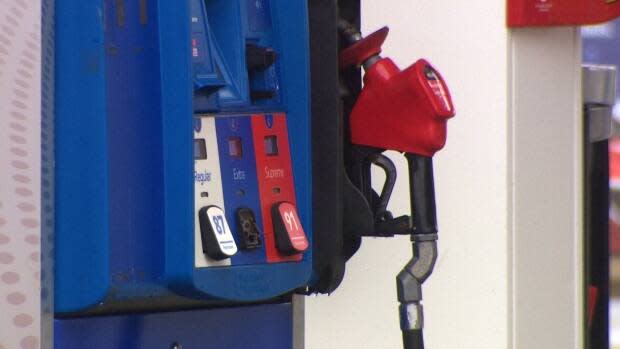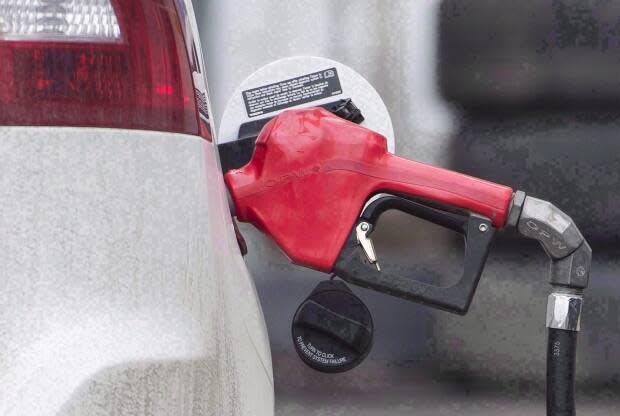Fuel prices drop sharply in N.L. with another unscheduled change


The maximum prices of all fuels, except for propane, took a steep dive across Newfoundland and Labrador on Friday as the Public Utilities Board made yet another unscheduled change.
The PUB said the change was due to what the provincial regulator called a "significant downward shift in the benchmarks."
It's the third time prices have fluctuated this week and Friday's setting is the week's second unscheduled change.
Regular self-serve gasoline dropped 10.1 cents per litre across the province.
One of the biggest changes is diesel, which plummeted by 41.3 cents per litre on the island and 59.5 cents in Labrador.
Furnace heating oil fell by 35.8 cents per litre, while stove oil decreased by 35.8 cents per litre in Newfoundland and 69 cents per litre in Labrador.
Maximum gasoline prices across the island now range from $2.18 on the Avalon Peninsula to $2.30 in the southern Newfoundland community of Ramea, where gas is the most expensive in the province.
In Corner Brook, a litre of gas will set you back $2.19. It's more than a penny higher at $2.20 in central and on the Burin Peninsula, and between $2.20 and $2.22 along the Northern Peninsula.
In Labrador, regular gas costs $1.74 in the Straits, $1.78 in the south, $1.62 in central, $2.25 in Labrador west and $2.27 in Churchill Falls.
Diesel on the island is now $2.24 on the Avalon, and costs as much as $2.27 on the Northern Peninsula. In Labrador, prices range from $1.81 in the Straits to $2.42 a litre in Churchill Falls.

As for furnace heating oil, it's between $1.60 to $1.64 on the Avalon Peninsula before taxes, and as much as $1.62 to $1.66 on the Northern Peninsula.
The PUB says price of fuel benchmarks dropped significantly this week. The regulator also offered more clarity on how the price for a litre of gasoline is calculated. Using the Avalon Peninsula as an example, the price before taxes is $1.54 per litre, but then there's 64 cents in taxes on top of that with a 15 per cent HST ringing in at 28.48 cents, 11.05 cents for the carbon tax, 14.5 cents for the provincial gas tax and a 10-cent federal excise tax.
'There's a huge drop'
Spiralling prices since Russia's invasion of Ukraine in February have meant a few uneasy months for consumers, who have been grappling with the constantly changing costs and the uncertainty of when the next hit will come at the pumps.
Even with Friday's drop, gas costs are about 45 cents higher than they were before the war started.
Among the businesses feeling that squeeze are gas stations themselves, in particular small, independent stations that keep the wheels turning in rural areas.
Brent Sweet, who owns Brent's Convenience in Irishtown-Summerside on Newfoundland's west coast near Corner Brook, told CBC News Thursday it wasn't too long ago when he could fill his station's tank for about $35,000.
Recently that bill has been just shy of $100,000, he said.
Sweet said 57 per cent of his gross revenue comes from gasoline alone and with people filling up less because of the high prices, his business just isn't making as much money. Profit margins are also razor-thin, he said.
"There's a huge, huge drop. We're still making the same fixed amount per litre. If gas goes to $5 a litre, we'll still make our 10 cents or whatever they allow us to make, which is set by the provincial government," he said.
"We make less. At a dollar a litre we make 10 per cent, then your expenses have to come out of that. At two dollars a litre we make five per cent and if they use a credit card we make three per cent."
Sweet said all of his working capital is now in his tanks, and he doesn't expect the money to come back. He has worries about the future of rural Newfoundland towns.
"If you sell a product at that low margin, you either sell a huge amounts of it or you go out of business," he said.
"We're a cash-poor company and it wasn't always like that but we are right now."
The following chart shows how gas prices have changed recently at Newfoundland and Labrador retailers, as reported by users of the GasBuddy.com website.


